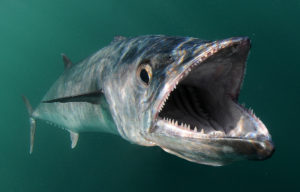
Photo Courtesy of Jason Arnold
October 18, 2022
Mr. Dale Diaz
Chairman
Gulf of Mexico Fishery Management Council
4107 West Spruce Street, Suite 200
Tampa, Florida 33607
Dear Chairman Diaz and Members of the Council,
The American Sportfishing Association, Coastal Conservation Association, and Congressional Sportsmen’s Foundation would like to make our positions clear on draft Coastal Migratory Pelagics Amendment 33. Our individual positions as far back as 2016 have not changed nor have our requests for incorporating the social and economic data necessary to characterize the recreational king mackerel fishery that has not only a harvest but also a catch-and-release and encounter component. To date, our requests have not been addressed, and in fact, the current Amendment 33 is based solely on reallocating uncaught fish using an arbitrary set of alternatives that assume unharvested fish are being wasted.
This is a fishery in which the recreational sector is satisfied and not up against any annual catch limits like so many other fisheries in Federal waters. Why bring king mackerel to a point of controversy by arbitrarily reducing available fish to the recreational sector when there have been no attempts by the Council to quantify the value of unharvested fish and the number of unharvested fish needed to be left in the water to maintain high encounter rates? We continue to contend that king mackerel is an excellent example where Optimal Yield (OY) should not be based solely on the maximum harvestable biomass reduced only by data uncertainty.
Please consider the following general positions and concerns:
- We are opposed to any additional changes in sector allocation until there has been an appropriate evaluation to determine the most efficient allocation change, if any. Shifting fish simply because they are uncaught is not appropriate in the recreational king mackerel fishery because both catch-and-release and harvest are critical management elements for recreational anglers. To date, harvest via landings has been the only consideration in Amendment 33. Fish left uncaught have great value to the recreational fishery, in not only the number of fish available to be encountered by anglers, but also by providing a more balanced age structure that facilitates opportunities for trophy catches. Simply shifting fish because they are uncaught is unwarranted.
- The current OY for mackerel does not consider the socio-economic values nor the greatest overall benefit to the nation of a recreational fishery (as prescribed in the MSA) that has elements of both harvest and catch-and-release and depends on abundance for high encounter rates. This is an issue that has been continually raised by the recreational community for king mackerel and has not been addressed technically or from a management perspective. We again request that this issue be addressed prior to any allocation considerations.
- Both current anecdotal observations on the difficulty in finding fish and the scientific evidence that recruitment has been below the average target for several years concerns us. The most recent stock assessment indicated the stock was being harvested at 85% of the overfishing status determination criteria and recruitment was poor, yet the recreational sector was harvesting well below their quota. Framework Amendment 11 pushes the percent difference between OFL and ABC/ACL for king mackerel even closer. Is it possible that the management of king mackerel has actually depended on the recreational sector not meeting its quota? We strongly urge caution in allowing more harvest.
- According to the Allocation Review Policy adopted by the Council in April 2019, king mackerel allocation review was expected to be initiated in April 2025. Allocation has been brought to the forefront at this time because of the FES conversion of recreational data which is accompanied by converting allocation to the FES currency. The SSC has stated that converting allocation to FES currency is technically not possible for king mackerel. In fact, Framework Amendment 11 has kept the allocation the same as when in CHTS currency; thus, the commercial fishery will realize a significant increase in quota. At this time, a further re-allocation based solely on uncaught fish and not in sync with the Council’s new allocation review process and guidelines is premature and Amendment 33 ignores the Council’s own policies.
We have specific concerns and recommendations relative to the alternatives in draft Amendment 33:
- The alternatives are based solely on landings and arbitrary percentages of uncaught pounds to be reallocated to the commercial sector. There has been no attempt to determine if, in fact, all or a portion of those uncaught fish have social and economic importance to the recreational fishery. There should be an action in the amendment that updates OY to quantify the social and economic elements of how the recreational community uses this fishery.
- The text of Amendment 33 poorly reflects the technical and management concerns of the recreational fishery. The discussion section acknowledges, in one sentence, that recreational fishermen noted in 2017 that leaving fish in the water was important to the fishery. In fact, most of the text in the discussion focuses solely on landings and the percentages of caught and uncaught fish and makes no attempt to note that recreational fishery remains concerned about leaving the appropriate number of fish in the water nor how recreational fishermen actually prosecute the king mackerel fishery. Nowhere in the latest draft document has there been an attempt to quantify the abundance needed by the recreational fishery to account for both harvest and catch-and-release through high encounter rates for migratory king mackerel.
- Alternatives 2 and 3 are both based on just 4 years of the new FES converted recreational landings plus commercial landings. A model projected total ACL for each of those years is calculated, and the difference in total ACL and total landings are averaged for the four years to determine “uncaught fish.” Each year carries significant weight in determining the total ACL. The text in the discussion states that Covid-19 may have affected the 2019-20 recreational fishing year. In fact, 2019-20 is the lowest year of recorded recreational landings by a significant amount from at least 2001, whether in CHTS or FES currency as seen in Table 1.1.1. Furthermore, Table 2.1.5 projects the 2023-24 season under Alternative 2 will result in 80.2% of the recreational ACL being landed and 97.6% for Alternative 3. If the 2019-2020 Covid year is removed from the calculations, Alternative 2 jumps to 88% and Alternative 3 to 107%. Thus, there is significant risk that the recreational sector will exceed its ACL due to the variability in its historic landings. These alternatives, with only four data points used, show a disadvantage to the recreational sector, and should be discarded.
- Alternatives 2 and 3 use a 25 and 50 percent portion, respectively, of the difference in total model-based ACLs to be reallocated to the commercial sector. These percentages are not based on any social or economic data as requested by the recreational community and have no context at all based on the text in the document. They are simply arbitrary percentages that lack justification for their proposed allocation shift.
- Alternative 1 leaves the allocation in its current CHTS currency. In the text, it is acknowledged that this is a de facto reallocation to the commercial sector. This also occurs whether Amendment 33 is acted upon or not because of the current rulemaking for Framework Action 11. We have agreed with this de facto reallocation in Framework Action 11 because of the inability to convert the CHTS allocation into FES currency. So, in fact, the commercial sector is already getting a sizable increase in quota based on the new FES-based ACL projections. Framework Amendment 11 cuts overall catch limits by 19% but increases commercial quotas, which will be landed in its entirety based on recent history. The result will be a reduction of the number of fish left in the water. We continue to ask, if commercial harvest increases beyond current levels because of additional reallocation and recreational catches are stable, but equals a greater percentage of our available quota, what does that mean for the overall stock, the ability to keep fish in the water, and the high encounter rates that are so valuable? Furthermore, this action alone will increase the probability of the recreational sector exceeding our quota. We ask that you not make any additional changes until our concerns are addressed. To be clear, king mackerel is an exception to our typical position on CHTS to FES allocation conversions. We would not agree to keeping the CHTS-based allocations for species where the recreational landings and allocations can both be converted to FES currency, such as the recent case with red grouper.
In summary, none of the recreational concerns or requests, since originally pointed out at least since 2016, have been addressed by the Council. The SSC has not been given any direction to re-evaluate OY relative to the value of leaving fish in the water nor to estimate the number of fish that should remain uncaught to maintain quality king mackerel fishing opportunities for recreational fishermen.
To that end, we believe this Amendment, as currently written, does not address any recreational concerns, and in fact, ignores the recreational sector in both tenor and context. Furthermore, the Council has failed to provide the necessary justification for any of the proposed alternatives nor their impacts relative to our concerns. We will not support any additional reallocation without significantly more analyses to answer our basic questions that assure any additional quota allocated to the commercial sector will not affect the current fishing experience nor increase potential for the recreational sector to exceed our quota.
Thank you for your time and consideration of our comments.
Sincerely,
Martha Guyas
American Sportfishing Association
Ted Venker
Coastal Conservation Association
Chris Horton
Congressional Sportsmen’s Foundation








